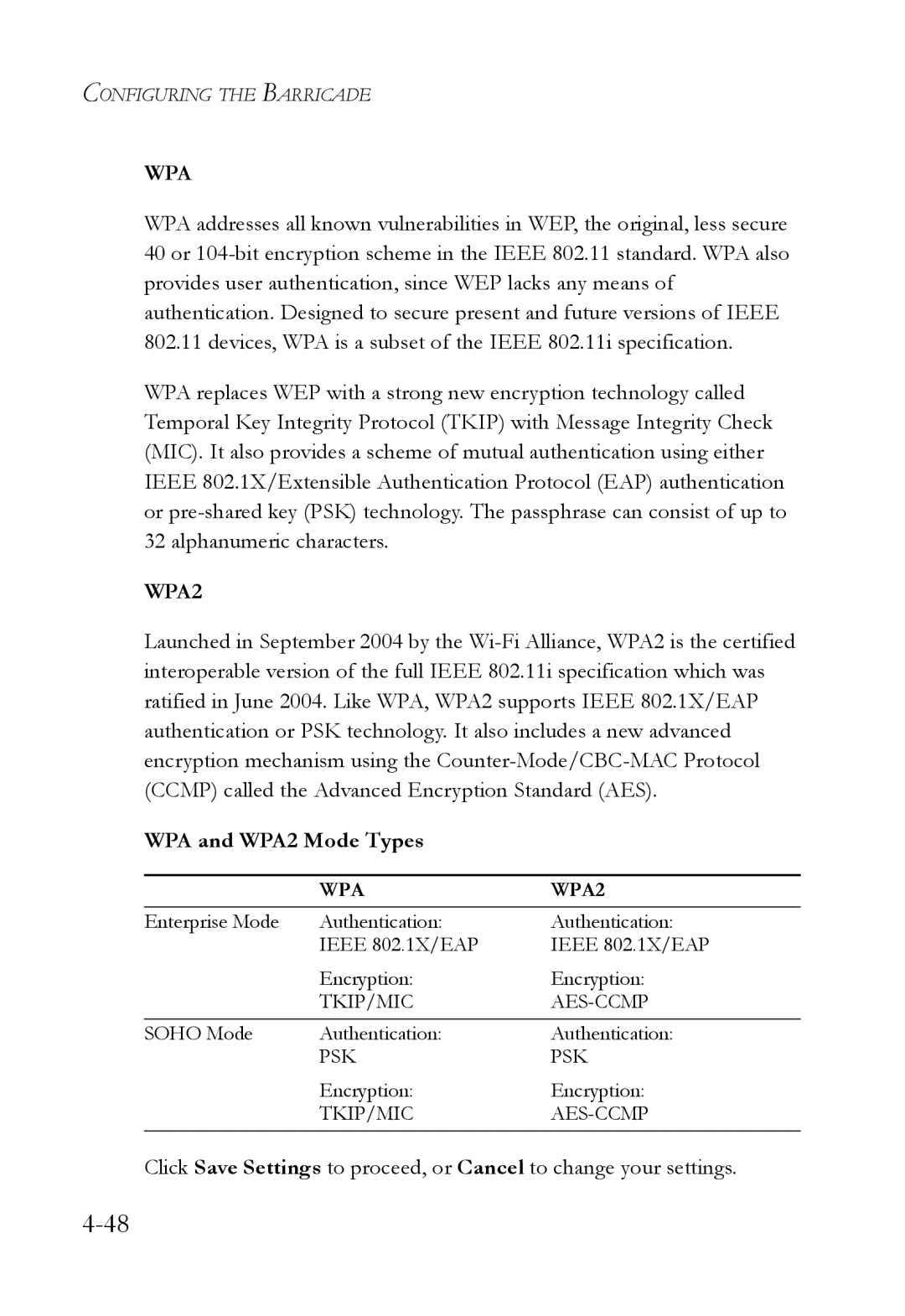CONFIGURING THE BARRICADE
WPA
WPA addresses all known vulnerabilities in WEP, the original, less secure 40 or
WPA replaces WEP with a strong new encryption technology called Temporal Key Integrity Protocol (TKIP) with Message Integrity Check (MIC). It also provides a scheme of mutual authentication using either IEEE 802.1X/Extensible Authentication Protocol (EAP) authentication or
WPA2
Launched in September 2004 by the
WPA and WPA2 Mode Types
| WPA | WPA2 |
Enterprise Mode | Authentication: | Authentication: |
| IEEE 802.1X/EAP | IEEE 802.1X/EAP |
| Encryption: | Encryption: |
| TKIP/MIC | |
SOHO Mode | Authentication: | Authentication: |
| PSK | PSK |
| Encryption: | Encryption: |
| TKIP/MIC | |
|
|
|
Click Save Settings to proceed, or Cancel to change your settings.
